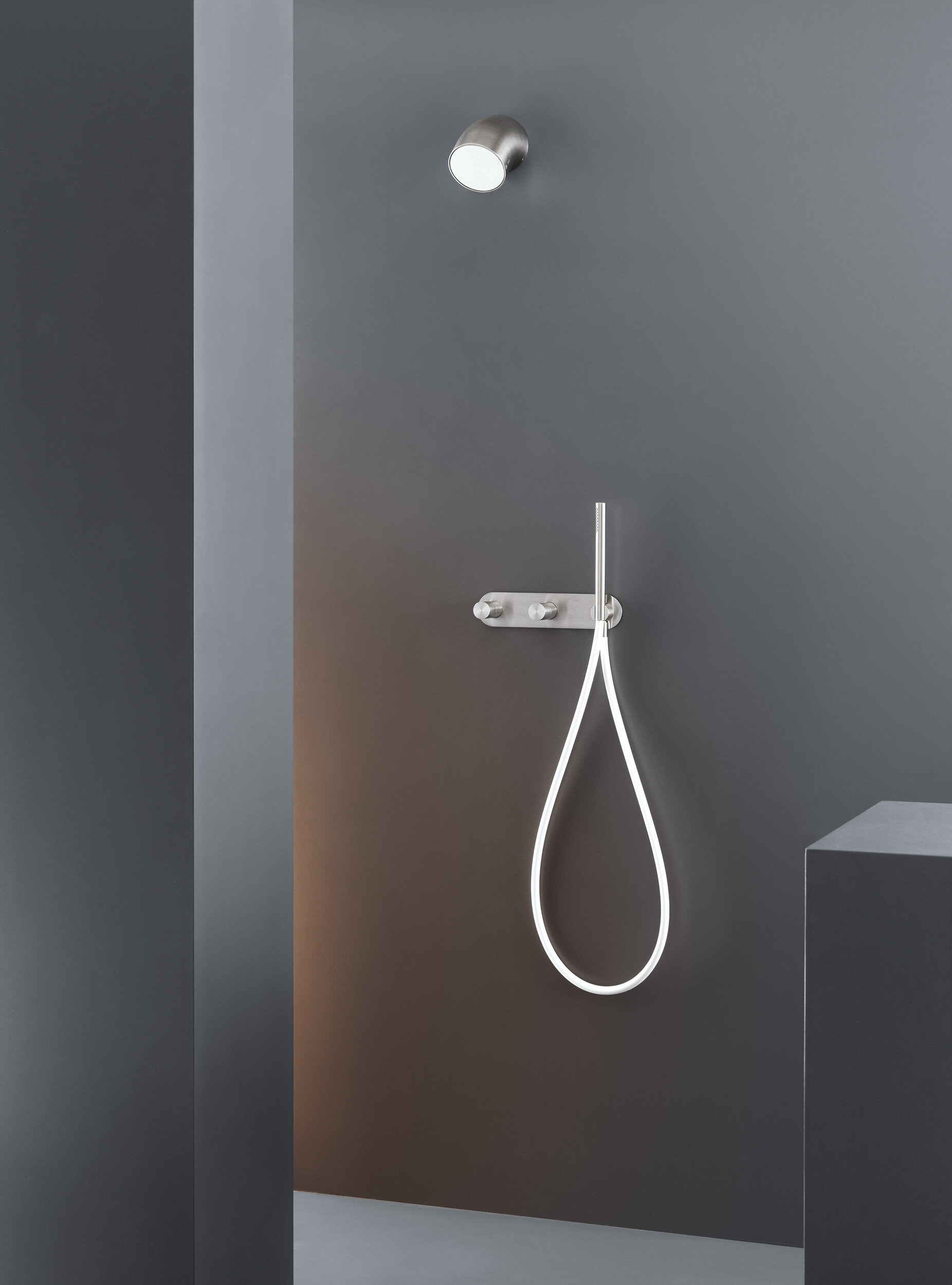
Cartesio
Ceadesign - 2011
Intellect in action.
The way we think of space in our daily lives is influenced by the geometric model formalized by Cartesio (René Descartes) in 1637: oriented, perpendicular lines, which starting from one point describe two and three-dimensional geometries. In the industrial era, thanks to the abstractionist avant-gardes and the research of the masters of rationalism aiming to make the constraints of the machines beautiful, the rigorous geometry and the marked perception of space become a source of intellectual pleasure, almost a declaration of mankind to Nature, an attempt to distinguish itself from it through the intellect, the aesthetics of the "cogito, ergo sum" taken to the extreme.
Look at the other finishes on Ceadesign website
Stainless is more.
Perpendicular segments that branch off into space, sharp changes of direction, movements around the axis: Cartesio is intellect in action. The tap is made of a 30 mm diameter 316 stainless steel tube, and is designed to maximize functionality and minimize formal processing. The mixer is placed in the appendix, distanced from the stem of the tap: in this way it is possible to handle it without accidentally interfering with the flow.
Surface line point.
The Cartesio tap is characterized by the sharp folds of the dispenser which have an external connection radius equal to the tube radius and an internal radius equal to zero! The graphic effect is very strong: the regulator is perceived as a line, the change of direction as a point. The set of perpendicular segments ideally identifies a surface. Steel highlights the regularity of the trait, both with the material strength of the satin finish, and with the reflection of the polished stainless steel that makes the object visible only by virtue of changes of direction.
Pure geometry.
The space described by the rotation of the dispenser around the shaft axis is a solid corner that meets a friction at the beginning and end of the radius of action. Regardless of the position you leave it in, the tap will describe two planes intersecting in space: one defined by the intersection of the stem and the mixer arm, the other by the folds of the dispenser. This determines the clearness of the graphic sign, free from any decorative attribute, pure geometry.
WANDERLUST








